
Roots
The very fibers that crown our heads carry whispers from ancient lands, echoes of hands that understood earth’s bounty as sustenance for scalp and strand. For those with textured hair, this connection runs deeper than conscious memory. It is a story etched into the very helix of being, a legacy passed through generations, not merely through genetic code, but through the enduring wisdom of ancestral plant knowledge.
This wisdom, held in the gentle application of a botanical blend or the communal braiding of a protective style, speaks to an inherited understanding of what truly nourishes and fortifies. We are not just tending to hair; we are engaging with a living archive, a continuous conversation with those who came before us, asking ❉ What ancestral plant knowledge still applies to textured hair care today?

Hair Anatomy and Physiology from an Ancestral and Modern View
To appreciate the enduring power of ancestral plant practices, one must first grasp the distinctive biology of textured hair. Unlike straight strands, each curly or coily hair shaft possesses an elliptical cross-section, which contributes to its unique shape and resilience. This elliptical form, coupled with the varied angles at which hair emerges from the scalp, creates inherent points of vulnerability along the strand, making it prone to dryness and breakage. Ancient communities, without the benefit of microscopes or laboratories, observed these characteristics through lived experience.
They recognized the need for deep moisture, gentle handling, and protective measures. Their solutions, drawn from the flora around them, directly addressed these intrinsic needs, acting as nature’s own emollients and fortifiers.
Consider, too, the scalp, the fertile ground from which each strand springs. A healthy scalp is paramount for hair vitality, and ancestral healers understood this implicitly. Their treatments often focused on scalp health, employing plants with cleansing, soothing, or stimulating properties.
Modern science now validates many of these traditional uses. For instance, the anti-inflammatory compounds found in many herbs help alleviate scalp irritation, while their antimicrobial properties maintain a balanced microbiome, fostering optimal growth conditions.
The deep wisdom of ancestral plant knowledge, passed through generations, offers a living archive for the care and understanding of textured hair today.
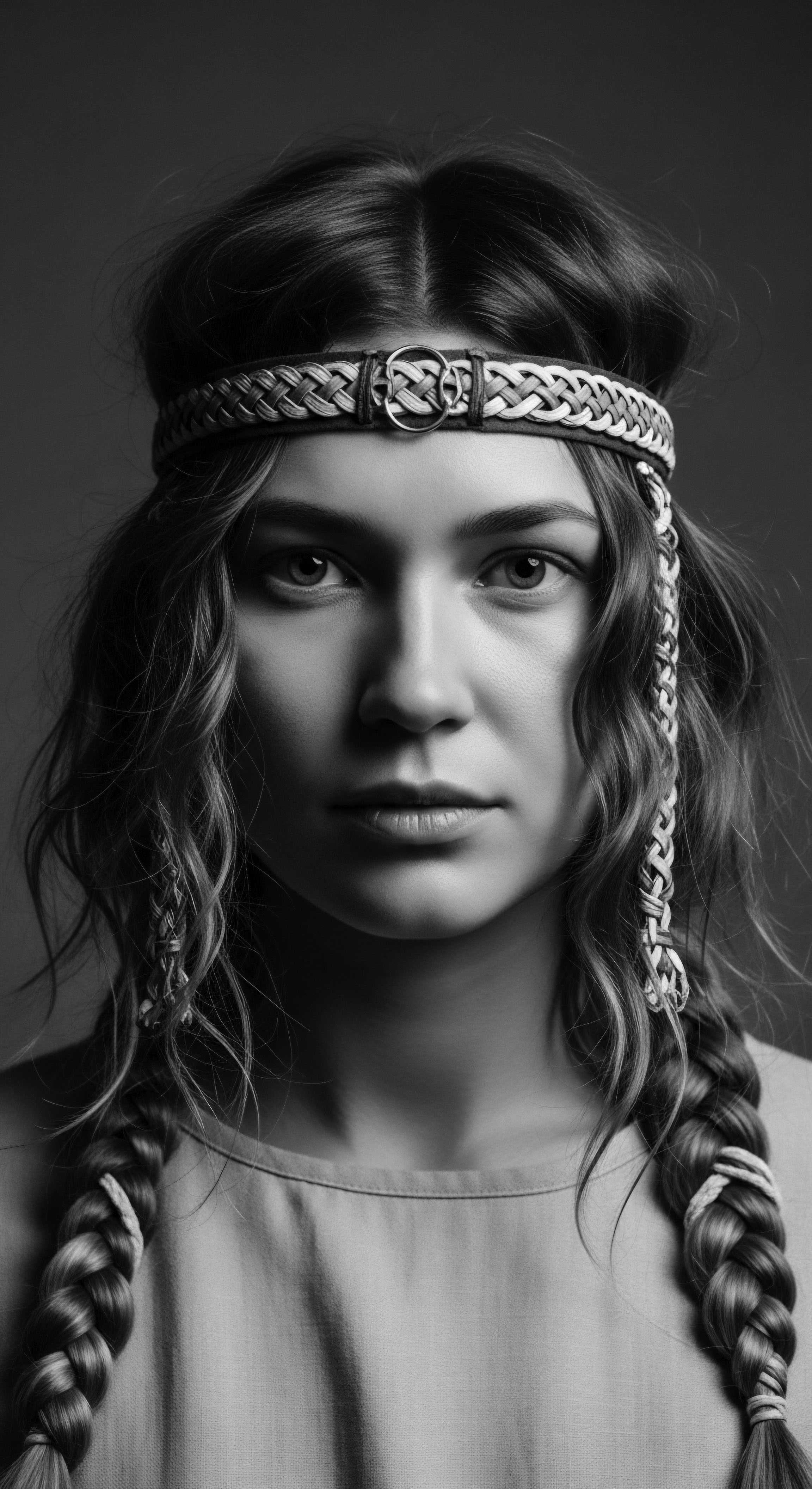
Textured Hair Classifications and Cultural Origins
The language we use to categorize textured hair today often relies on numerical and alphabetical systems, such as 3C or 4A. While these classifications provide a modern shorthand for curl pattern, they only capture a fraction of the story. Historically, the categorization of hair was far more nuanced, deeply intertwined with identity, community, and region.
Hair types were described not just by curl, but by their texture, sheen, length, and how they responded to specific plant-based treatments. A “coil” might be recognized as needing a certain type of butter from the shea tree, while a “wave” might benefit from a lighter oil, reflecting a practical, communal taxonomy that predated scientific classification.
In many African cultures, hair served as a visual language, signifying age, marital status, tribal affiliation, social standing, and spiritual beliefs. The very act of hair care was a communal ritual, a shared moment of intimacy and knowledge transfer. The specific plants used within these rituals became part of a collective understanding, a heritage of care passed from elder to youth. This cultural context means that plant knowledge applies not just to the hair’s physical attributes, but to its profound symbolic meaning.
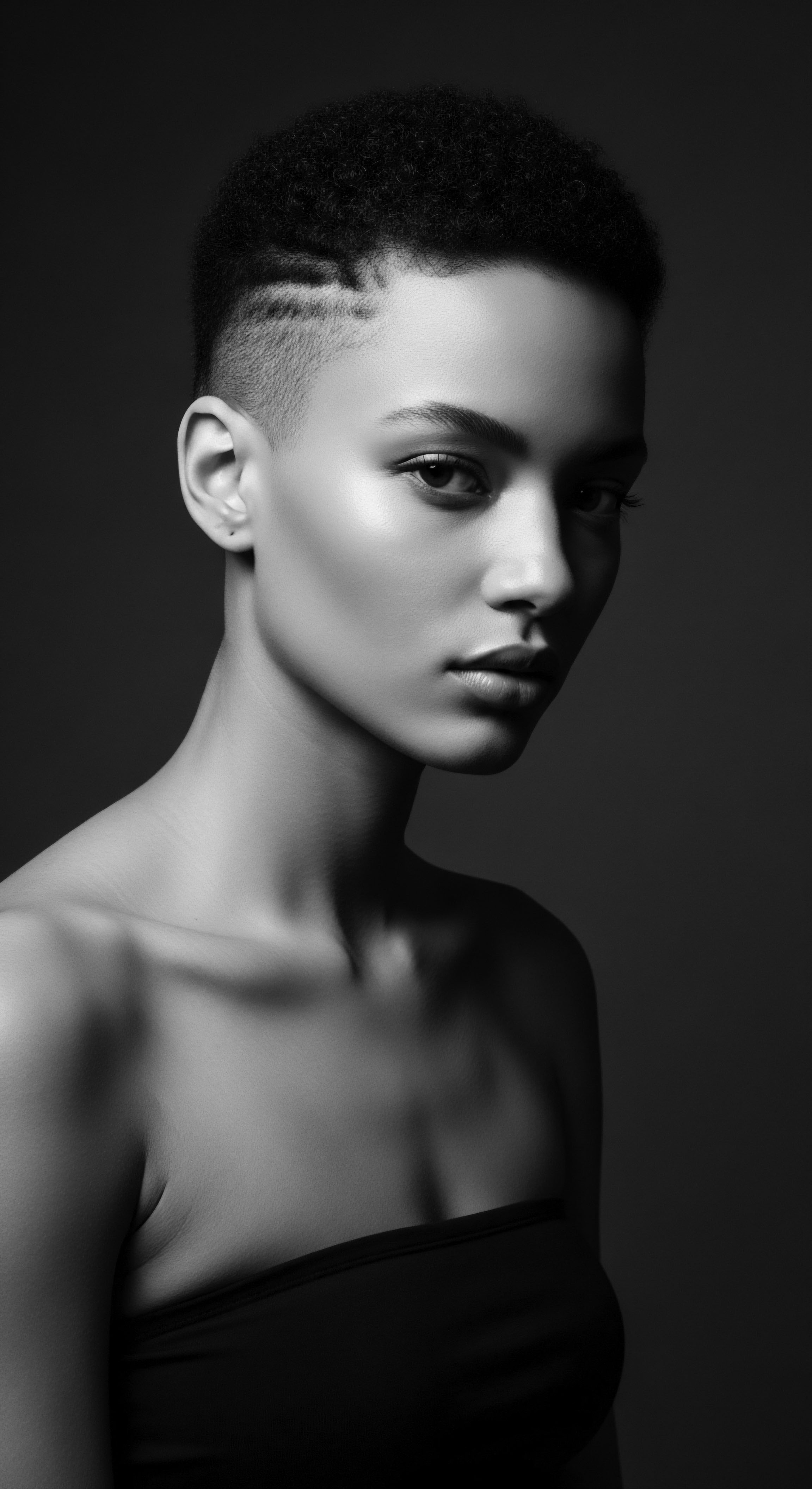
The Lexicon of Textured Hair Echoes Ancestral Wisdom
Many terms associated with textured hair care today carry silent echoes of ancestral practices. When we speak of “sealing” moisture into the hair, we are, in a sense, re-enacting the traditional application of plant butters or oils to lock in hydration, a practice dating back centuries in West African communities. The concept of “pre-poo” treatments, involving oils applied before washing, mirrors ancient traditions of conditioning and protecting strands from harsh cleansing agents.
The ingredients themselves often retain their traditional names or associations, even as they appear in modern formulations.
- Shea Butter ❉ Known as “women’s gold” in West Africa, its use for moisturizing and protecting skin and hair dates back centuries.
- Aloe Vera ❉ Referred to as the “plant of immortality” by ancient Egyptians, its soothing and hydrating properties were utilized for over 5000 years for skin and hair.
- Neem Oil ❉ Revered in India as the “village pharmacy,” its antifungal and antibacterial qualities have been applied for thousands of years to address scalp issues and promote hair health.
- Amla (Indian Gooseberry) ❉ A cornerstone of Ayurvedic hair care, it has been used for centuries to strengthen roots, prevent hair loss, and maintain hair color due to its rich antioxidant content.
- Hibiscus ❉ Applied in both Ayurvedic and African traditional medicine, it is recognized for preventing premature graying, thickening hair, and reducing hair fall.
These terms, when explored, reveal a lineage of deep connection to the earth and its offerings for hair vitality.
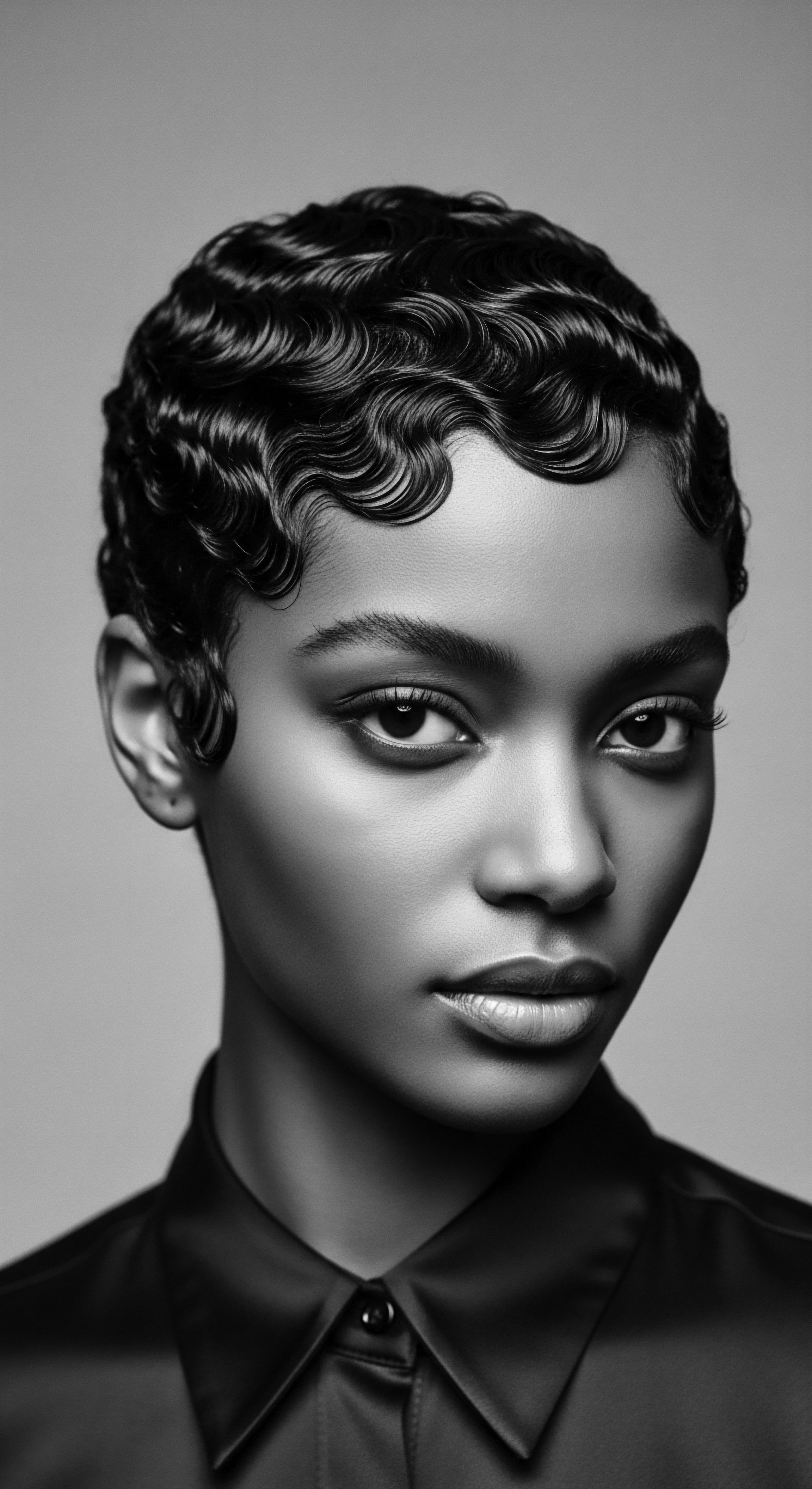
Hair Growth Cycles and Influencing Factors from a Heritage Perspective
The cycle of hair growth—anagen (growth), catagen (transition), and telogen (rest)—is a biological constant. However, ancestral knowledge considered how environmental factors, nutrition, and holistic well-being influenced these cycles. Communities understood that diet, rich in nutrient-dense plants, directly correlated with hair health. They recognized that periods of stress, or scarcity of certain foods, could affect hair vitality, reflecting a holistic view of the body long before modern endocrinology.
For instance, the use of certain plant infusions or topical applications was often aimed at creating an optimal scalp environment to support the anagen phase, promoting robust growth. This historical understanding, rooted in observation and intergenerational knowledge, continues to inform contemporary approaches to hair growth, often validating these ancient botanical interventions.

Ritual
The care of textured hair has always been more than a mere routine; it is a ritual, a connection to legacy. From the communal courtyard gatherings in ancestral villages to the quiet moments of self-care in modern homes, the application of plant wisdom has shaped the practices and aesthetics of textured hair styling for millennia. The techniques, the very tools, and the transformations witnessed through hair are steeped in a heritage that honors both function and profound meaning.

Protective Styling Rooted in Ancestral Practice
Protective styles, a cornerstone of textured hair care today, are not a modern invention. They represent a direct continuation of ancestral practices designed to safeguard delicate strands from environmental elements, reduce manipulation, and retain length. Braids, twists, and locs, in their myriad forms, were not only expressions of beauty and identity but also pragmatic solutions. Plant-based ingredients played a central role in these styles.
For example, some historical accounts suggest that individuals applied plant-derived resins or sticky leaf extracts to help bind and secure intricate braided patterns, especially those intended to last for extended periods, providing a natural form of hold and protection. These traditional methods highlight an understanding of botanical properties that went beyond simple moisturizing.
The continuity of these styles, often passed down through oral tradition and hands-on teaching, underscores the enduring applicability of ancient plant knowledge. The very act of creating these styles, often using moistened fingers or plant-infused oils, mirrored a holistic approach to hair preservation.
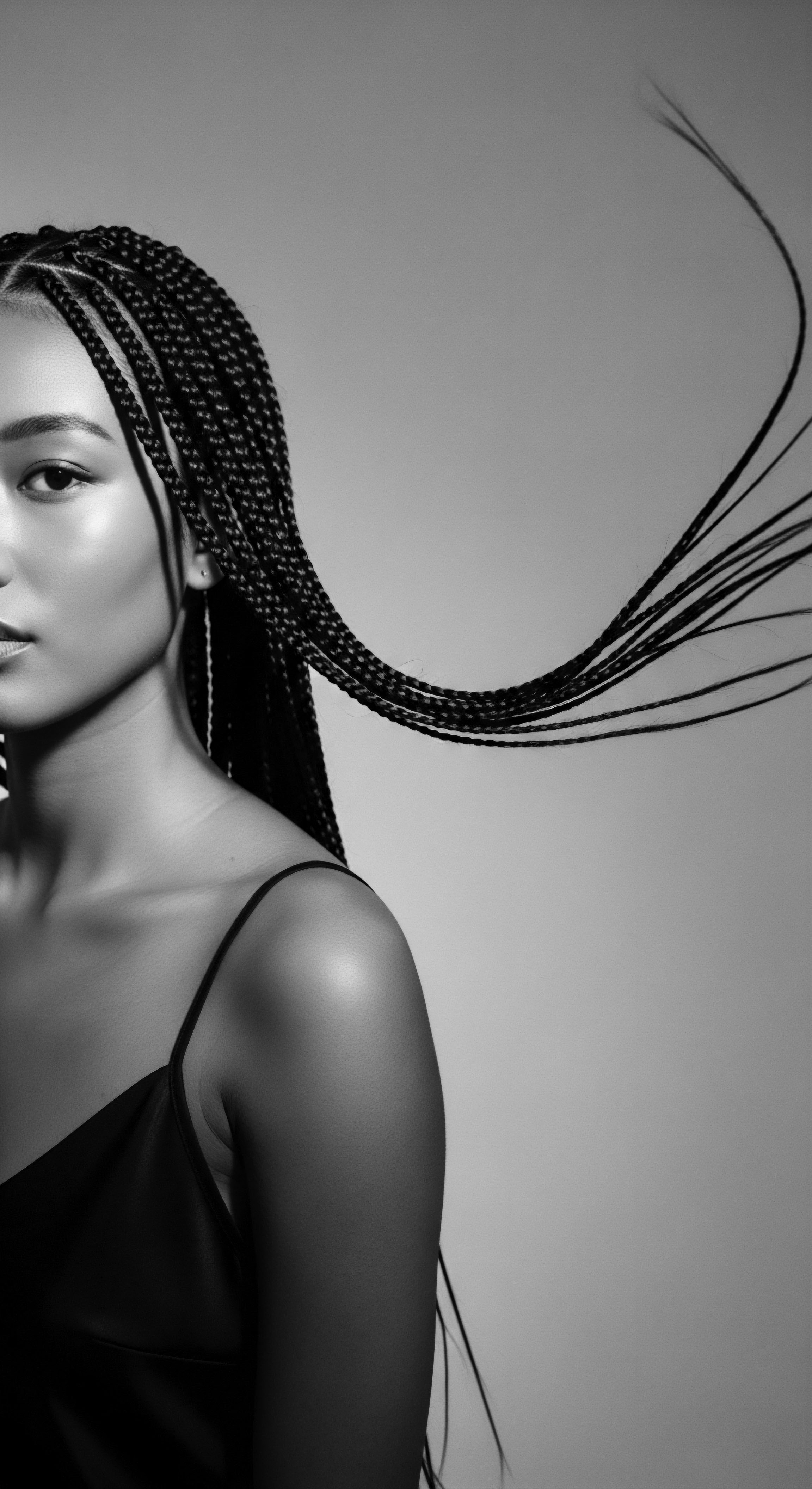
Natural Styling and Defining Techniques
The pursuit of natural definition for textured hair, a defining characteristic of contemporary natural hair movements, finds its roots deep within traditional practices. Ancestral communities employed a range of plant-based preparations to enhance curl patterns, add sheen, and maintain structure without altering the hair’s innate form.
Consider the ancient use of mucilaginous plant extracts , such as those from the inner leaf of Aloe Vera, which provided a gentle hold and profound hydration. These natural gels were applied to wet hair, encouraging the natural coil to cluster and set as it dried. This contrasts sharply with later attempts at chemical straightening, a relatively recent historical development in the diaspora which often led to significant hair damage. The traditional emphasis remained on celebrating and working with the hair’s inherent texture, a testament to an acceptance and reverence for natural form that predates modern beauty standards.
Another ancestral technique involved using specific plant oils to “stretch” or soften hair, making it more pliable for styling without heat. These methods allowed for a range of looks, from elongated curls to more defined, compact coils, all achieved through natural means and plant synergy.

Historical and Cultural Uses of Hair Enhancements
The practice of augmenting hair with extensions or wigs, while often associated with modern trends, also has a long and rich lineage within various cultures, especially in ancient Africa. Historical evidence points to the use of hair extensions crafted from natural fibers and even human hair, often secured with plant-based adhesives or integrated with intricate braiding techniques. These enhancements served not only aesthetic purposes but also conveyed social status, ceremonial significance, or protection.
The ingredients used to prepare and maintain these hairpieces or extensions were also often plant-derived, from oils that kept them supple to botanical dyes that matched or enhanced natural colors. This suggests a sophisticated understanding of plant chemistry and its application for both natural hair and extensions, demonstrating a holistic approach to hair adornment that respected both the natural material and the added elements.
Ancestral plant wisdom shaped styling, offering functional protective measures and celebrating the inherent beauty of textured hair.

Heat Styling and Ancestral Approaches
While modern heat styling often involves high temperatures and chemical agents, ancestral societies had their own ways of manipulating hair with warmth, albeit with a profound respect for the hair’s integrity. These methods were gentle, often involving sun-drying techniques after plant-based treatments or mild heat from warming plant-infused stones to encourage absorption of oils into the hair shaft.
The goal was never to permanently alter the hair’s curl pattern through extreme heat, but rather to enhance its natural qualities, promote penetration of botanical conditioning agents, or prepare it for protective styles. The ancestral approach to warmth was about activation and gentle manipulation, a stark difference from the chemical straightening trends that became prevalent later and often caused irreversible damage to the elliptical hair shaft.

The Complete Textured Hair Toolkit from a Heritage View
The tools used in ancestral hair care were often simple yet exceptionally effective, many crafted directly from plant materials or enhanced by them. These tools were extensions of human ingenuity, designed to work in harmony with the hair’s natural form and the properties of the plant-based treatments.
| Traditional Tool/Method Finger-Combing/Detangling |
| Ancestral Plant Connection Softened by application of Shea Butter or plant oils for gentle glide. |
| Modern Application/Benefit Minimizes breakage, preserves curl pattern, distributes product evenly. |
| Traditional Tool/Method Wooden Combs |
| Ancestral Plant Connection Often crafted from trees, smoothed with plant oils to reduce friction. |
| Modern Application/Benefit Reduces static, detangles gently, helps spread natural oils from scalp. |
| Traditional Tool/Method Calabash Bowls |
| Ancestral Plant Connection Used to mix and store various plant concoctions for hair and skin. |
| Modern Application/Benefit Represents traditional vessels for creating hair masks and rinses. |
| Traditional Tool/Method Plant Fibers/Ropes |
| Ancestral Plant Connection Used as a base for extensions, braiding aids, or binding tools. |
| Modern Application/Benefit Precursor to natural fiber extensions, demonstrating protective styling origins. |
| Traditional Tool/Method These tools and methods represent a legacy of resourceful, plant-centric hair care that prioritizes preservation and celebration of textured strands. |
The creation and use of these tools were often part of a community’s knowledge, with specific plants chosen for their durability, softness, or how they interacted with the hair. This holistic system of care, from ingredient sourcing to tool crafting and application, provides a powerful testament to the enduring heritage of textured hair styling.

Relay
The lineage of plant knowledge for textured hair care is not merely a collection of historical anecdotes; it is a dynamic relay, a continuous transmission of wisdom from antiquity to the present. The profound insight held within ancestral practices, often dismissed by colonial narratives, is increasingly validated by contemporary scientific inquiry. This deep exploration moves beyond surface understanding, revealing how traditional botanical applications offer potent solutions for today’s textured hair challenges, all while reaffirming a powerful heritage.

How Ancestral Botanical Lore Informs Modern Hair Science
Modern scientific research often serves as a powerful echo, confirming what ancestral communities understood through observation and generations of experiential knowledge. The active compounds within plants used for millennia are now being isolated and studied, revealing the precise mechanisms behind their historical efficacy.
For instance, the widespread use of Shea Butter across West Africa for centuries for both skin and hair care is attributed to its rich composition of fatty acids, particularly oleic acid and stearic acid, along with vitamins A and E. These components provide significant moisturizing, anti-inflammatory, and antioxidant properties. The presence of amyrin in shea butter has been identified as a key contributor to its anti-inflammatory effects. This scientific understanding directly supports its traditional application as a protective sealant against harsh environmental conditions and a conditioner for dry, textured hair.
Similarly, Aloe Vera, revered as the “plant of immortality” in ancient Egypt and used for millennia across Africa for its soothing and moisturizing qualities, contains a complex array of polysaccharides, vitamins, enzymes, amino acids, and minerals. These constituents contribute to its hydrating, anti-inflammatory, and antimicrobial actions, making it effective for scalp health and hair moisture. The historical use of aloe to combat scalp dryness or irritation finds strong backing in its biochemical makeup.
Another compelling example rests with Neem Oil. This revered botanical, central to Ayurvedic tradition and introduced to parts of Africa centuries ago, was used for its ability to address dandruff, head lice, and hair thinning. Modern analysis reveals neem contains compounds like azadirachtin, nimbolide, and various fatty acids, which possess potent antibacterial, antifungal, and anti-inflammatory properties. These findings corroborate its historical application as a natural remedy for a range of scalp ailments, demonstrating the scientific basis for its ancestral reputation as a “village pharmacy”.

Case Study ❉ The Enduring Legacy of Emblica Officinalis (Amla) in Hair Vitality
A powerful illumination of how ancestral plant knowledge still applies today is found in the enduring legacy of Emblica officinalis, commonly known as Amla or Indian Gooseberry. While originating in South Asia, its benefits have long resonated and been integrated into diverse healing traditions that influence global perspectives on natural remedies. Amla has been a cornerstone of Ayurvedic hair care for centuries, prescribed for promoting hair growth, preventing hair fall, and addressing premature graying.
A specific study published in the Journal of Ethnopharmacology in 2011 highlighted that Amla extract enhances hair growth by improving follicular health and preventing oxidative damage. This scientific validation underscores the precision of ancestral observations. Beyond this, Amla is exceptionally rich in Vitamin C , containing nearly 20 times the amount found in oranges, along with powerful antioxidants like flavonoids, polyphenols, and tannins, and essential minerals such as iron, calcium, and phosphorus. This nutritional density directly supports its traditional use in strengthening hair roots and reducing hair fall.
Ancestral practitioners formulated Amla into oils by soaking dried pieces in carrier oils like coconut or sesame, and into hair masks using its powder, often mixed with other herbs or yogurt. These preparations delivered direct nourishment to the scalp and hair shaft, aligning perfectly with modern understanding of nutrient absorption and antioxidant protection.
The persistent application of Amla across generations, from ancient texts like the Charaka Samhita (800 BCE) and Sushruta Samhita (600 BCE) which describe it as a rejuvenating herb for hair, to its common inclusion in contemporary natural hair products, showcases a remarkable continuity. The journey of Amla from ancient Ayurvedic texts to modern scientific studies exemplifies the profound and enduring relevance of ancestral plant wisdom. Its benefits in preventing premature graying by nourishing hair follicles with antioxidants and promoting thickness through deep hydration continue to make it a central component in heritage-informed hair care.
Modern scientific inquiry frequently confirms the precise mechanisms behind the historical efficacy of ancestral plant-based hair remedies.

Connecting Traditional Practices with Modern Understanding of Hair Issues
Many common textured hair challenges today—dryness, breakage, scalp irritation, and slow growth—were also concerns for ancestral communities. Their plant-based solutions were often multi-purpose, addressing several issues simultaneously.
- Dryness and Moisture Retention ❉ Traditional use of heavy plant butters like Shea Butter and Cocoa Butter created a protective barrier that sealed in moisture, a method still effective for locking hydration into porous textured hair.
- Breakage and Strength ❉ Plant proteins and vitamins from ingredients such as Hibiscus and Amla were applied to strengthen hair shafts and improve elasticity, reducing vulnerability to breakage.
- Scalp Health and Cleansing ❉ Botanical infusions and clays, like Rhassoul Clay , were used as gentle cleansers that maintained the scalp’s natural balance, preventing irritation and product buildup without stripping natural oils.
- Growth Stimulation ❉ Certain plants, rich in compounds that promote blood circulation to the scalp, such as Neem and specific African ginger varieties , were traditionally massaged into the scalp to encourage stronger, healthier growth.
This relay of knowledge highlights a profound cultural and scientific collaboration across time, where the insights of the past continue to serve as a compass for the present, affirming the irreplaceable value of textured hair heritage. The traditional emphasis on scalp care, for instance, has gained renewed appreciation in modern hair science, with studies pointing to a strong correlation between scalp health and overall hair vitality. The careful selection of plant parts—leaves, roots, seeds, barks—for specific applications also speaks to an intricate botanical literacy.
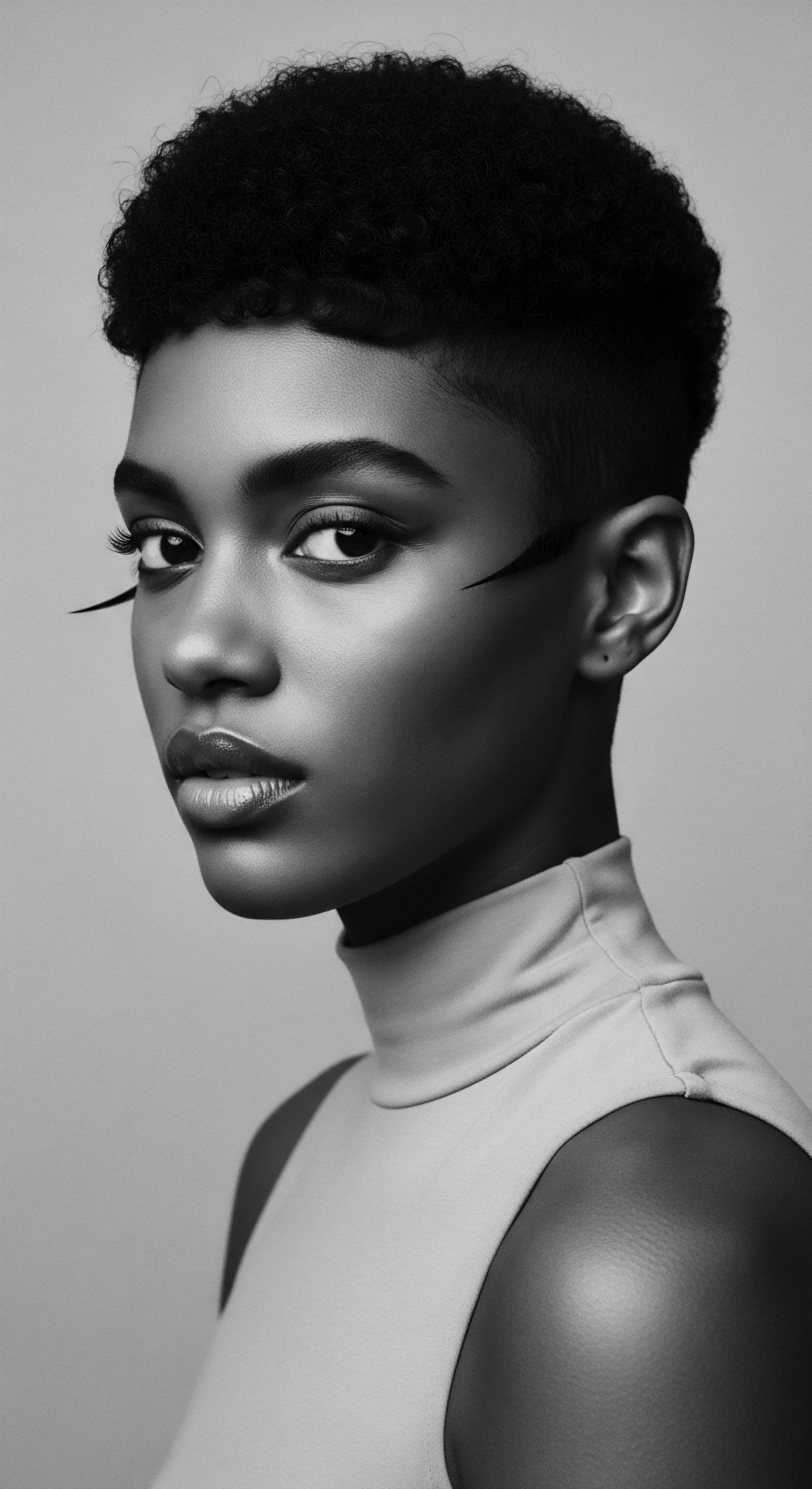
The Interplay of Studies and Cultural Context
Studies on ethnobotanical practices reveal high informant consensus factors (ICF) in regions like Ethiopia and Morocco, indicating strong agreement among traditional healers and community members regarding the uses of specific plants for hair and skin care. For instance, a study in northeastern Ethiopia identified 17 plant species used for hair and skin care, with an ICF of 0.95, signifying deep shared traditional knowledge. This collective agreement, spanning generations, acts as a powerful form of historical evidence, often preceding and guiding formal scientific investigation.
These investigations often reveal how traditional therapies are applied topically for hair, while the same plants might be taken orally for other ailments, suggesting a nuanced understanding of absorption and localized benefit. This level of detail in ancestral practice, passed down through oral histories and demonstrations, forms an indispensable bridge between ancient wisdom and contemporary scientific understanding, allowing for a more profound appreciation of textured hair’s heritage. The wisdom does not simply exist; it is transmitted, lived, and continuously reinterpreted.

Reflection
The strands that cascade, coil, and unfurl from our scalps are more than just protein filaments; they are living testaments, delicate yet resilient chronicles of ancestral journeys. Within each curl lies a whisper of the earth, a memory of hands that drew nourishment from the soil and applied it with intention. The enduring power of ancestral plant knowledge in textured hair care today is not a quaint relic of the past; it is a profound, active dialogue, a soulful recognition of heritage woven into every aspect of care.
We stand now at a crossroads, where the clamor of modern innovation meets the quiet wisdom of ancient traditions. Yet, the choice is not between one or the other, but in seeking harmony—a synthesis that honors the legacy of our forebears while navigating the complexities of our present. The plant-based remedies, the rituals of cleansing and adornment, the very philosophy of hair as a sacred extension of self—these are not lost. They persist, vibrant and vital, guiding us towards a care that is both deeply efficacious and profoundly resonant.
This journey into the heritage of textured hair reveals a continuous thread of resilience, creativity, and self-possession. Each botanical application, each protective style, each moment of mindful care, connects us to a collective memory, to the strength and beauty that have always defined Black and mixed-race hair. As we reach for a jar of shea butter or infuse water with hibiscus, we are not simply tending to our physical appearance. We are participating in a living library, upholding a legacy, and ensuring that the soul of every strand remains unbound, a luminous beacon reflecting centuries of inherited wisdom and future possibilities.

References
- Adeyemi, S. O. & Owoseni, A. A. (2014). Ethnobotanical Survey of Medicinal Plants Used for Hair and Skin Health in Selected Parts of Southwestern Nigeria. Journal of Pharmacognosy and Phytochemistry, 3(2), 241-246.
- Agyemang, E. A. (2018). The Cultural Significance of Hair in African and African American Communities. University of Cincinnati.
- Burkill, H. M. (1985). The Useful Plants of West Tropical Africa, Vol. 1. Royal Botanic Gardens, Kew.
- Chakraborty, S. & Devi, R. (2011). A review on medicinal plant ❉ Emblica officinalis (Amla). Journal of Ethnopharmacology, 136(3), 519-523.
- Deshmukh, M. & Kute, S. (2020). A comprehensive review on Azadirachta indica (Neem) and its medicinal uses. International Journal of Research in Pharmaceutical Sciences, 11(2), 2533-2540.
- Diop, C. A. (1974). The African Origin of Civilization ❉ Myth or Reality. Lawrence Hill Books.
- Ehling, R. & Sarin, R. (2014). Ethnobotanical Survey on Medicinal Plants Used in Traditional Hair Care Practices in Rural Communities of India. International Journal of Herbal Medicine, 2(5), 1-5.
- Heinrich, M. & Barnes, J. (2012). Fundamentals of Pharmacognosy and Phytotherapy. Churchill Livingstone Elsevier.
- Jain, S. K. (1991). Dictionary of Indian Folk Medicine and Ethnobotany. Deep Publications.
- Johnson, T. (2018). The Handbook of Traditional Skin Care. Healing Arts Press.
- Mazzio, E. A. & Soliman, K. F. A. (2009). In vitro screening of the anti-inflammatory and antioxidant activities of some African medicinal plants. Journal of Ethnopharmacology, 123(2), 295-304.
- Nadkarni, A. K. (1976). Indian Materia Medica. Popular Prakashan.
- Okwu, D. E. & Nnamdi, F. S. (2011). African Medicinal Plants as Hair Care Agents. Journal of Herbs, Spices & Medicinal Plants, 17(4), 307-319.
- Park, M. Y. & Kim, Y. S. (2017). A review of research on traditional Korean herbal medicines for hair loss. Journal of Ethnopharmacology, 203, 194-203.
- Trotter, R. T. & Logan, M. H. (1986). Informant Consensus ❉ A New Method for Identifying Potentially Effective Medicinal Plants. Journal of Ethnopharmacology, 18(3), 273-287.
